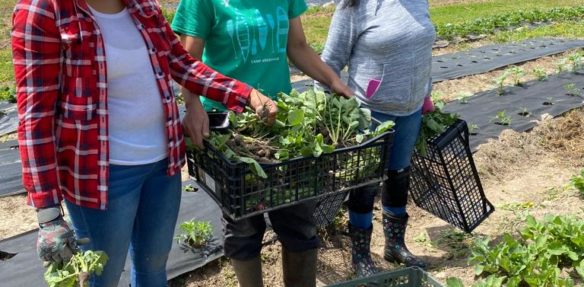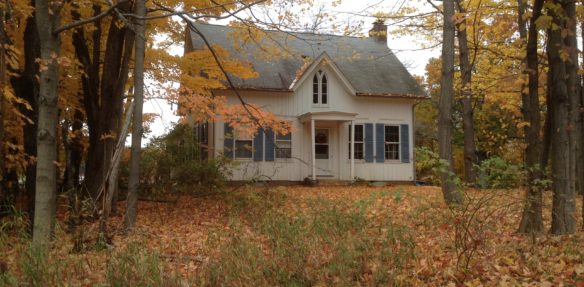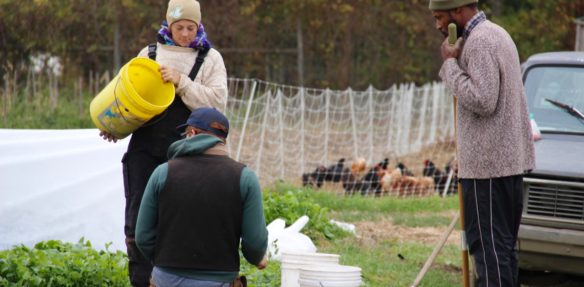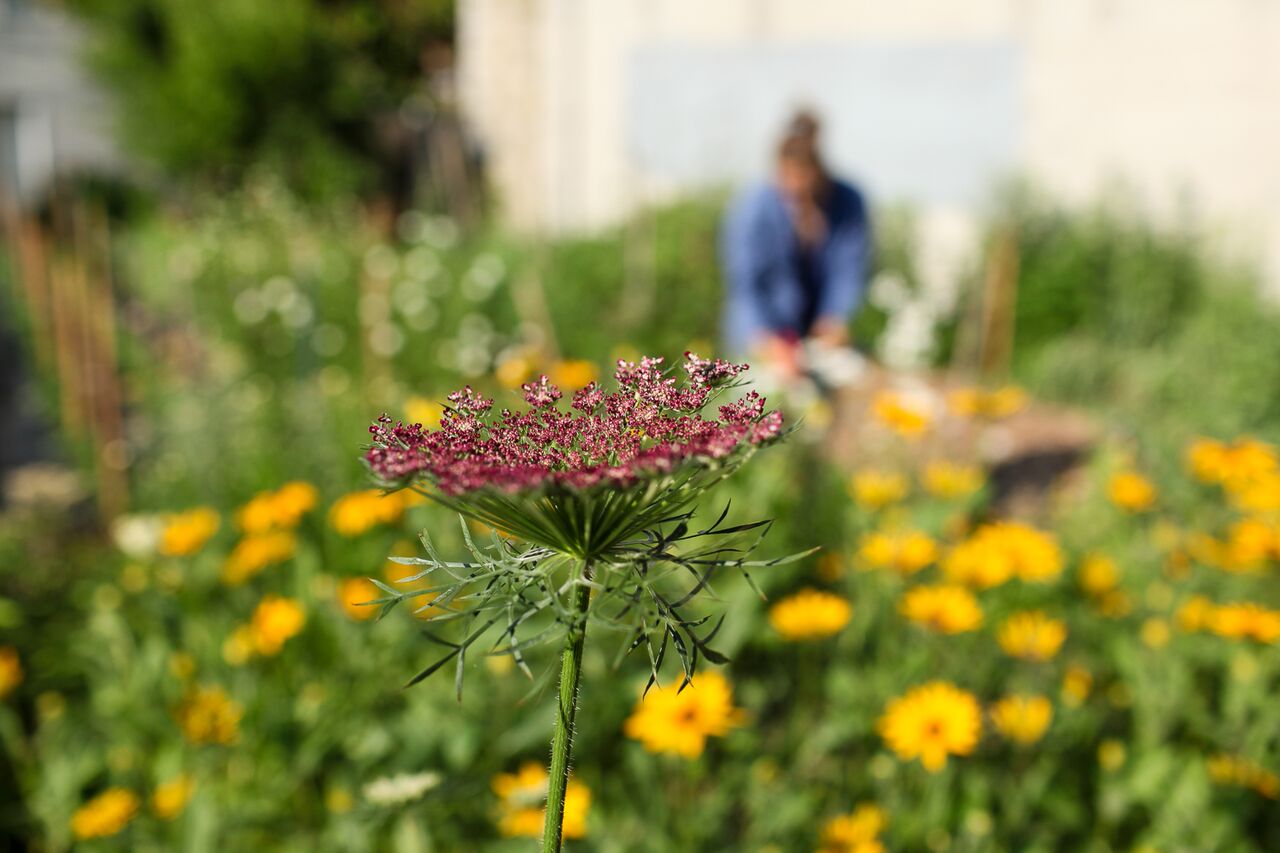
“We really need to expand what urban agriculture is…. People could be doing it with dozens of different specialty items. We have plenty of land [in Baltimore] and a lot of cities do.”
– Maya Kosok
Backstory
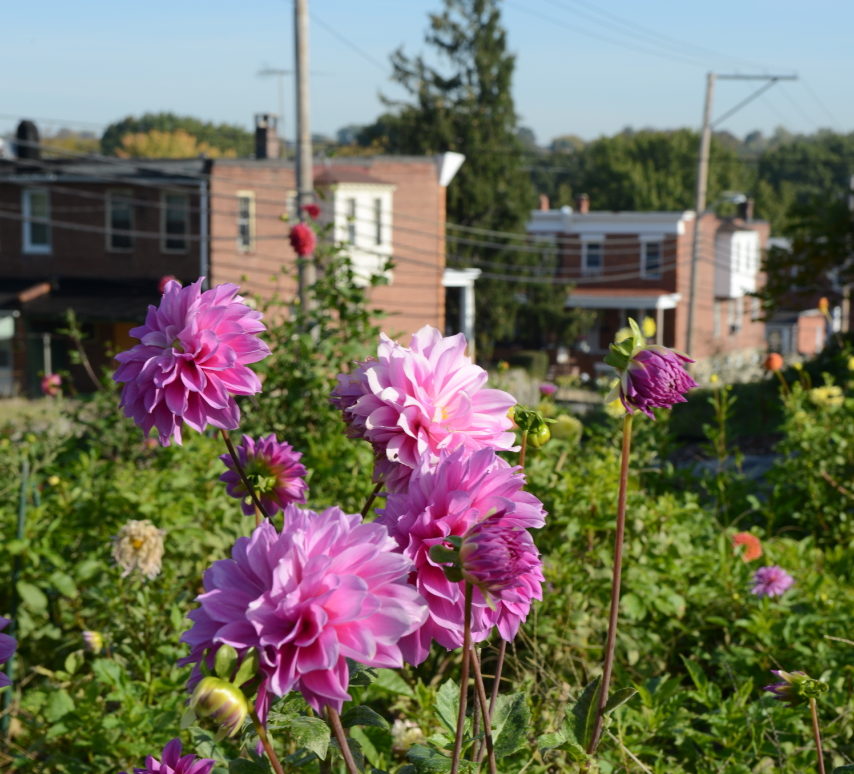
Baltimore, Maryland, the largest city in its state, is home to over a dozen urban farms, most of which are located on city-owned vacant property. Most of these farmers and gardeners access the land with a short-term “Adopt-a-Lot” agreement, but in 2011 the city issued a call for qualified farmers for a new, more stable long-term leasing program. Maya Kosok of Hillen Homestead has been farming her two plots of city-owned land for several years through the Adopt-A-Lot program, and as of early 2017 is in the process of becoming the fourth farmer – the second for-profit – to sign a five-year lease agreement.
When Maya first became involved in urban agriculture in Baltimore, she did not intend to become a farmer herself. With a background in environmental education, she began working as the head of community outreach at a nonprofit agricultural initiative in the city. After getting to know other farms around the city and realizing the potential for collaboration, she founded the Farm Alliance of Baltimore City, a network of producers that works to make urban agriculture more viable. While she initially thought she would continue supporting farmers without actually farming herself, she says “as I was running the Farm Alliance, interacting with different people, I felt like we should be doing this on a part-time individual for-profit scale — I really wanted to prove that it was viable to do it as an individual and earn some money.”
Starting Out and Finding Land
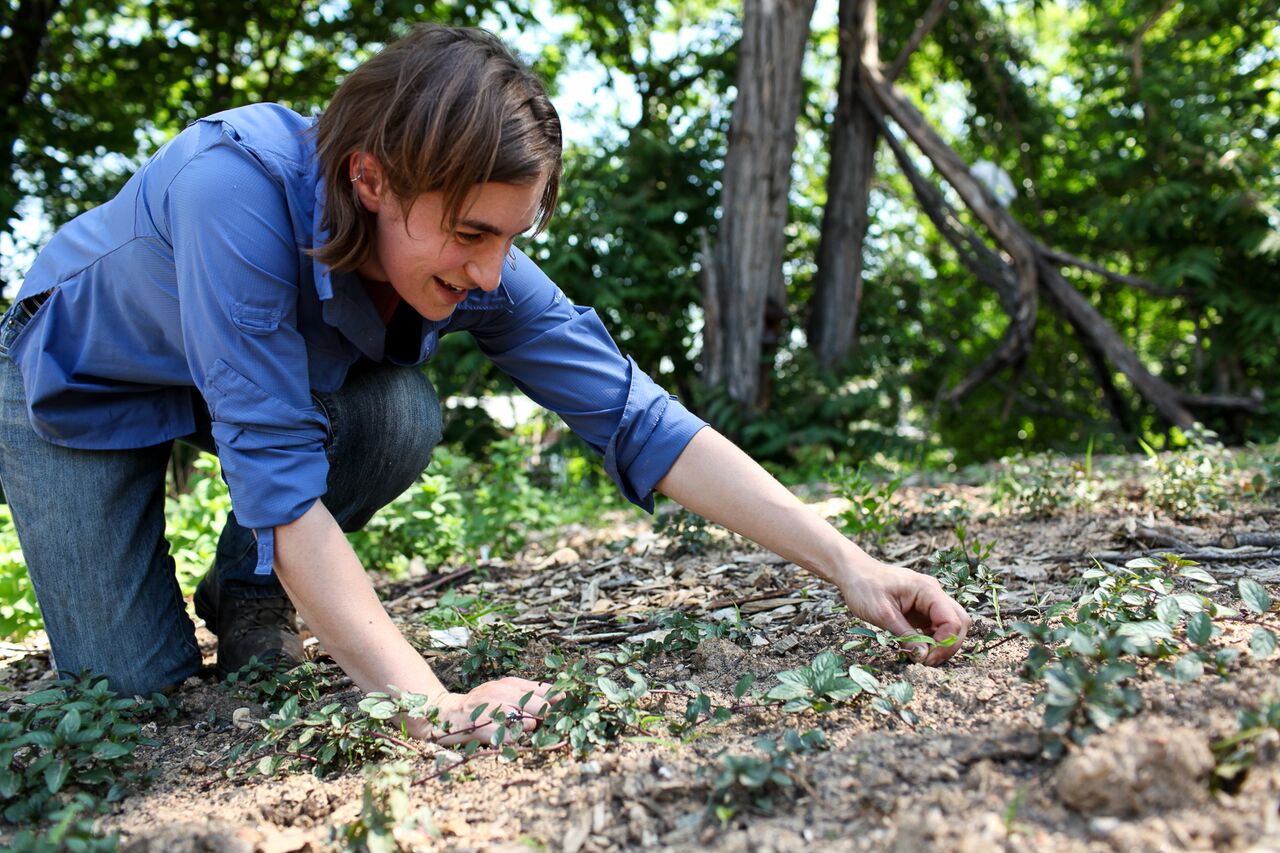
In 2012, Maya’s friend Ben adopted a vacant lot near where he had grown up and named it Hillen Homestead. Maya was interested in growing vegetables and flowers, crops with which she had some experience, and joined him in caring for the lot. That first winter, however, Ben passed away. After talking with his family, Maya decided to keep growing flowers and fruit in his memory. While she has chosen to keep the fruit trees, berry bushes, and okra freely available to the public, the part-time flower business has become a significant source of income.
For the first two seasons, Maya only used the initial lot (“Hillen”) but in her third season she added a second lot (“Kenyon”), approximately a mile and a half away. This lot was also already part of the Adopt-a-Lot program; it had first been a community garden, then a small urban agriculture site for one of Maya’s friends. When Maya’s friend moved on to a larger farm on land outside of the city, Maya took over the Kenyon site, which has “probably some of the best soil in the city.” While it can be challenging farming on two separate sites, Maya says she’s “pretty intentional about setting things up” (she grows lower-maintenance flowers at the lot further from her house) and it only takes about ten minutes to drive from one lot to the other.
The License
Thus far, Maya has been accessing both sites through the Adopt-a-Lot program, so tenure has been short term. The Adopt-a-Lot agreement is a type of license agreement, meaning that the farmers and gardeners have no contractual right to use the land, only permission from the City. These agreements are intended to last for one year, but the City is allowed to terminate the agreement at any time, for any reason, with 30 days’ notice.
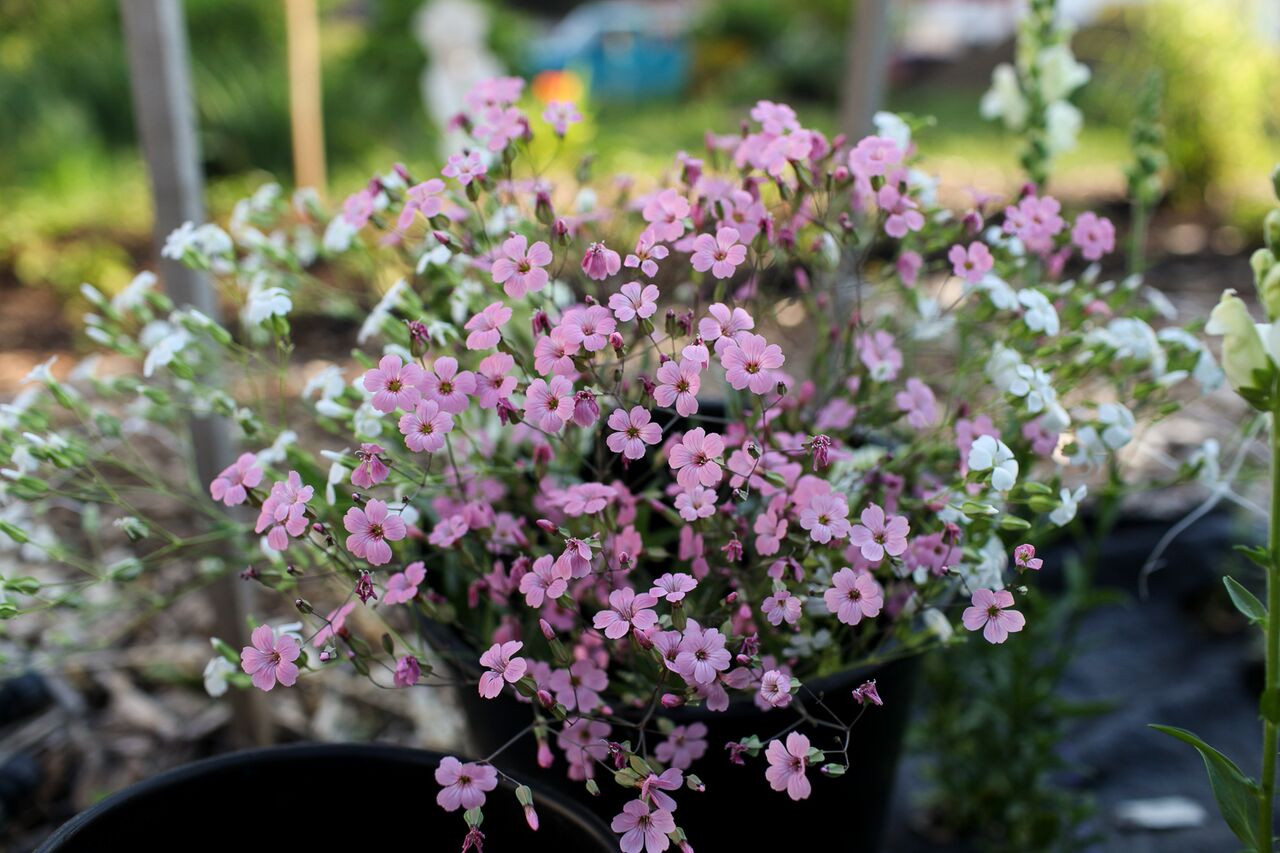
Maya is glad she was able to begin with the Adopt-a-Lot program. If she had been required to go through the rigorous application process required for a City lease when she was getting started four years ago, she might not have done it. She says, “I think that having a low barrier to entry and being able to try something out is essential.” The key is to make sure that farmers in license situations are fully aware of what type of agreement it is. Unless the City fully explains the legal details, it can be easy for licensees to incorrectly assume they are signing a lease, says Becky Lundberg Witt, an attorney at the Community Law Center. Becky runs the Community Law Center’s Urban Agriculture Project, which provides news and legal information around all aspects of agriculture in Baltimore City and has created an information sheet clarifying what the Baltimore Adopt-a-Lot agreement actually entails.
An Opportunity for Longer-Term Land Tenure Through A Negotiated Lease
While Maya thinks the Adopt-a-Lot license was a great way to start, she believes that license arrangements “should be in some sort of pipeline, where if it’s going well and you’re interested, you can move toward a longer term agreement.” She’s heading in that direction herself. She applied for a multi-year lease from the City in 2015, was approved, and has been negotiating the terms with the City and waiting for water access to be finalized. “As I’m getting more comfortable, amending, adding compost, putting in perennials, investing more in the site, I want the added security of the longer-term lease,” she explains. During the first two years under her license agreement she didn’t plant a single perennial. The third year, still under the license agreement, she planted a few perennials, but only those where she could see some return on investment within the first year. After her application for the leasing program was approved at the end of the third year, she invested in some plants that she won’t see a return on for a few years, but still are “all things I could dig up and take with me if I need.”
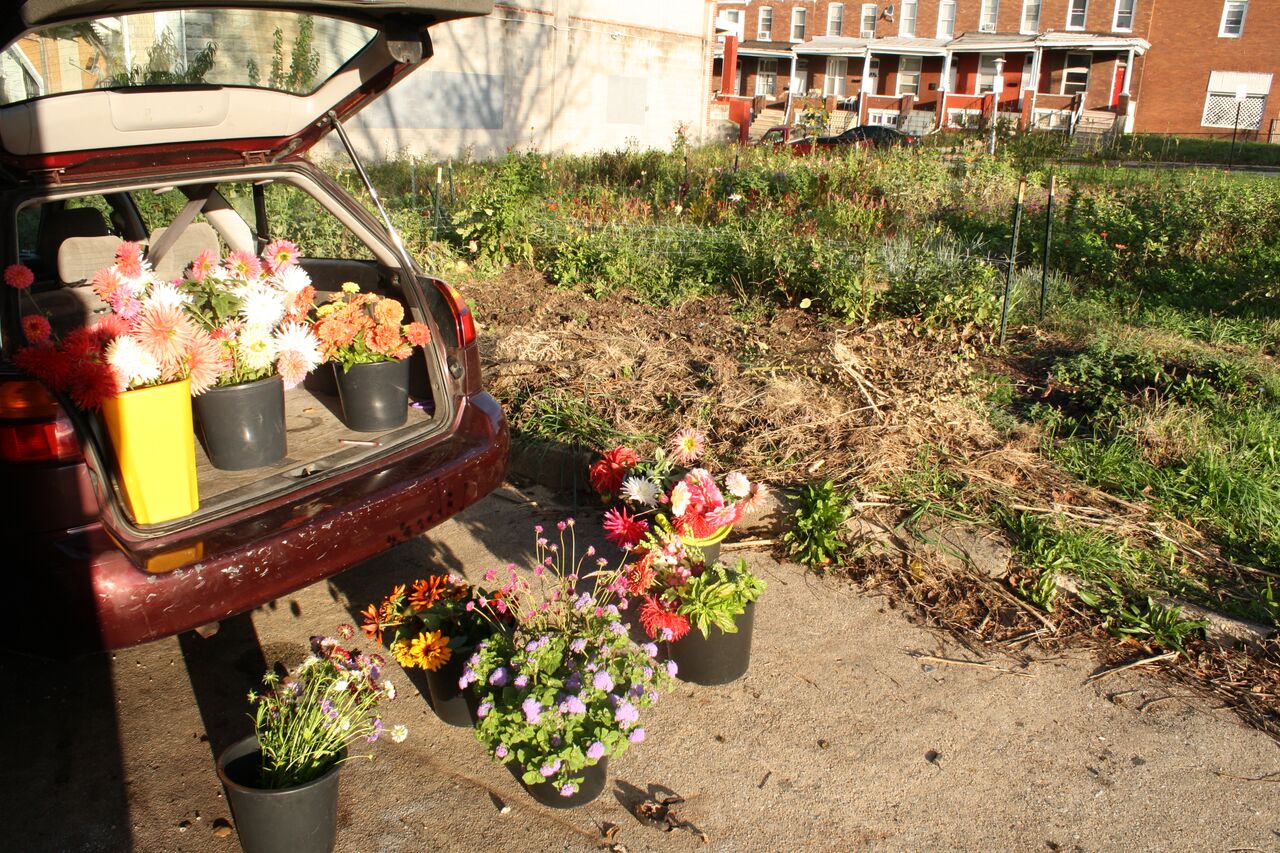
Leases are offered through the Homegrown Baltimore initiative, which Becky explains is “very different than the normal Adopt-a-Lot program. There’s much more vetting that goes into it, it’s much more intended for someone to be there on a full-time basis farming.” To apply for a lease, Maya had to submit her resume, farming experience, a business plan, and a plan for the site. Originally, the process was modeled after the traditional development process, where an individual or organization applied to be accepted as a farmer and then negotiated for a site. Increasingly, however, would-be farmers are approaching the City with a specific site in mind.
Not every Adopt-a-Lot site is available for a lease; a lot’s eligibility for leasing depends on the City’s development plans and the reaction of the neighborhood. Fortunately for Maya, the City had already approved the Kenyon lot for a lease at the request of her friend who previously Adopted it, and her Hillen lot is in a neighborhood with a lot of vacant land and not much development pressure.
Working with the City to Develop the Terms of the Lease
The agreement that Maya and the City of Baltimore are in the process of finalizing is a lease for five years with the possibility of renewal and a two year notice to vacate. This means that Maya will be on the property for at least seven years: at the end of five years, either the lease will be renewed or, if it is not renewed, she will still have an additional two years. Rental payments are $100/year for each site.
The first draft of the lease agreement that a representative from the City sent to Maya was adapted from a boilerplate building lease. Maya had a friend who is a lawyer look over the lease – not in a formal way, but just to offer some informal suggestions. While some references to agriculture had been added, other clauses were problematic in the farming context. For example, the draft included language specifying that the site must not be abandoned for a certain amount of time – less time than is reasonable for a farm to be dormant over the winter. While Maya doubts the clause would have been enforced as long as the site was cleaned up for the season, she did not want a legally binding document with an obligation to work the site over the winter.
Another important consideration for any lease, especially an urban one, is the question of liability. Under the lease agreement, Maya may be required to purchase liability insurance. She notes, however, that she is liable for anything associated with the property under the Adopt-a-Lot agreement as well, so the switch is not actually increasing her liability.
The leasing program has other advantages over the City’s licensing program beyond length and stability of tenure. The Adopt-a-Lot licenses do not allow farmers to build any structures, and the farmers have to obtain permission from the City to apply for any grants. Most importantly, participating in the leasing program can facilitate site improvements, including water access, grading, and fencing. The Baltimore Housing Department and Department of Public Works together run the Water Access Program, which allows Adopt-a-Lot licensees to connect to city water for the duration of the growing season for only $120. However, this option is not available to licensees on lots where water infrastructure has been damaged by demolition, or where it never existed – which is a common problem, including on Maya’s Kenyon lot. Once a farmer has entered the leasing program, the City is able to use its capital funds to provide a water hookup or other infrastructure improvements.
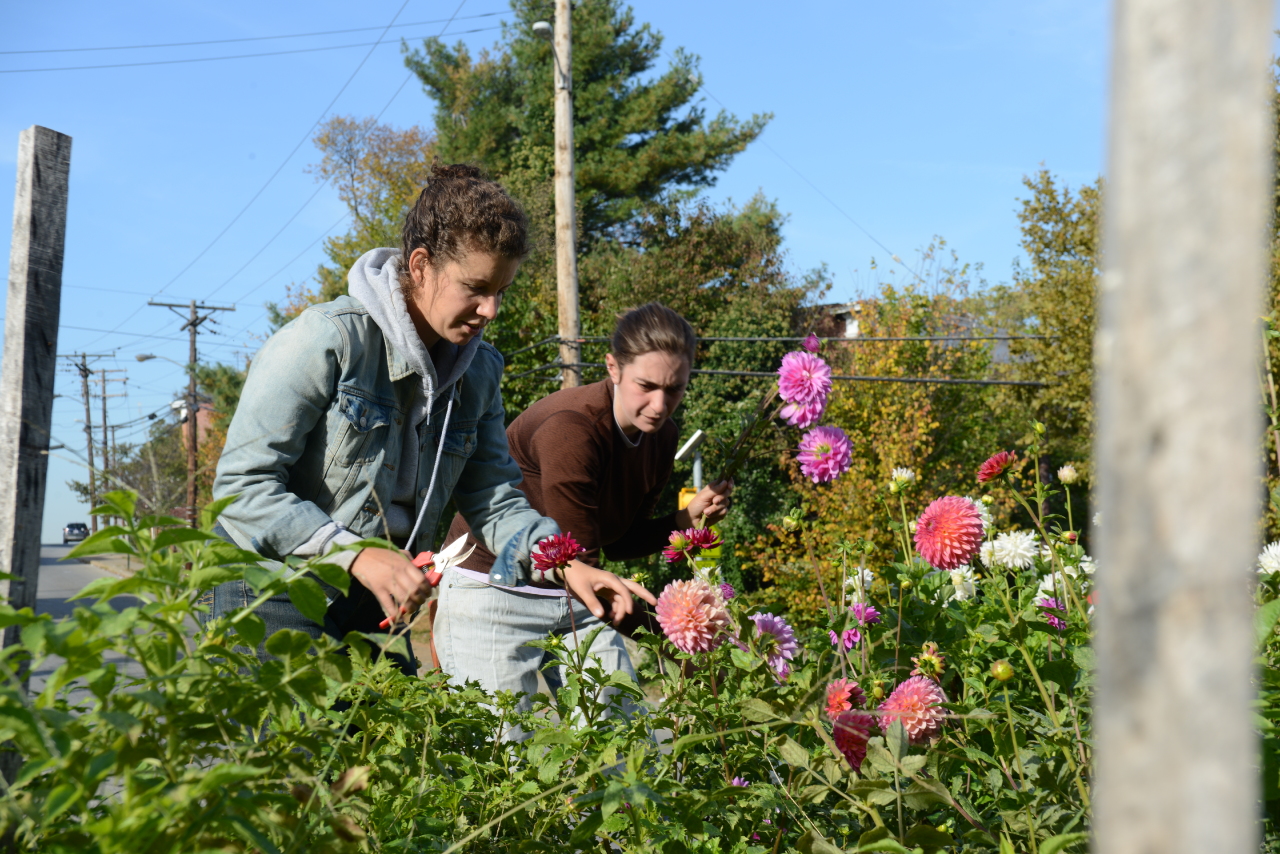
Replicating the Model
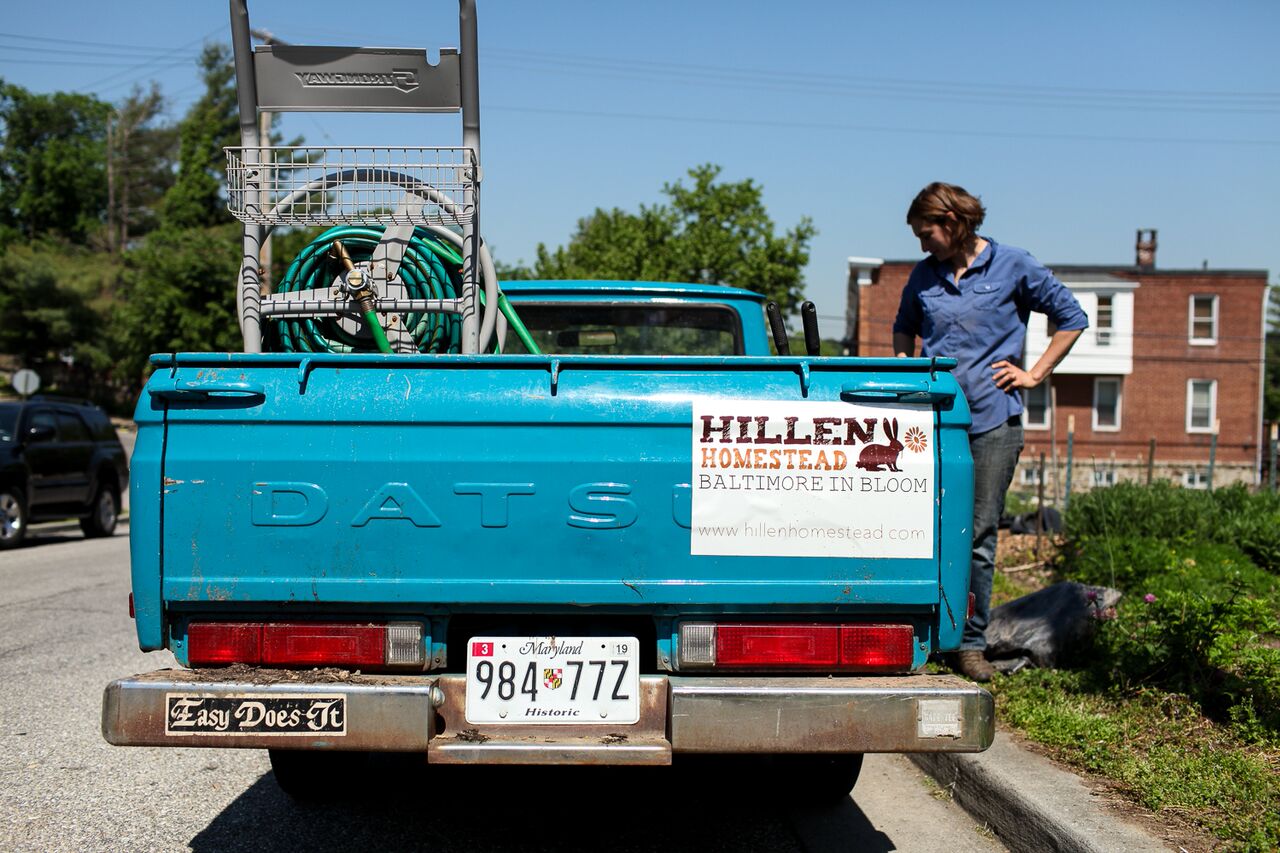
Of course, not every city has an agricultural leasing – or even licensing – program. Many are moving that direction, though, and as Maya says, “taking initiative will often show results.” There are plenty of benefits to the city; farming on otherwise vacant lots can beautify, reduce trash, stabilize neighborhoods, and increase surrounding property values. Maya is also a big proponent of expanding the understanding of what urban agriculture should be. “We can only have so many similar-sized nonprofit vegetable operations – not that we’ve passed that threshold yet,” she says. “We really need to expand what urban agriculture is…. People could be doing it with dozens of different specialty items like winter greens, natural dyes, chicken eggs. We have plenty of land [in Baltimore] and a lot of cities do.”
Maya’s advice for farm seekers, whether they’re looking for land in an urban area or not, is to collaborate with other growers in the region and “farm in a community.” She adds that it’s been very helpful “starting small and having a lean and nimble operation. Each season I can see what I want to do, how I want to do it, and can adapt easily.”
